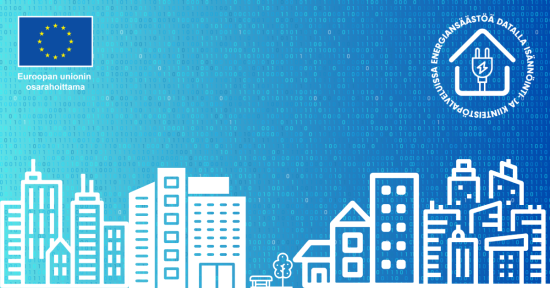The benefits of e-invoicing are widely known, but not all organisations have yet fully adopted it. In Finland, the use of e-invoicing has increased significantly in recent years, but there is still a long way to go before it reaches 100 per cent. However, full saturation is a necessary step if companies want to remain competitive and streamline their financial management processes.
Despite most invoices between Finnish companies and organisations being sent electronically, many companies are not yet able or willing to fully make the most of what e-invoicing has to offer.
The potential of e-invoicing goes far beyond simply sending and receiving invoices. The data that flows through e-invoices is key to financial automation and reporting. When all invoices are processed electronically, the company can use the data for a variety of purposes, among them financial forecasting, inventory management and strategic business planning.
Automation frees up resources and improves efficiency
When all invoicing has been made electronic, financial management processes can be almost completely automated, saving both time and money.
According to Timo Simell of TIEKE Finnish Information Society Development Centre, most invoices are of the kind that could be automated. Indeed, automation is one of the main benefits of e-invoicing, he says.
“Automating financial management means, first and foremost, eliminating unnecessary typing. Financial automation is not science fiction – it’s everyday business.”
By enabling invoices to be processed automatically, the need for manual entry is eliminated and the potential for errors is significantly reduced. This frees up finance professionals to focus on more strategic tasks, such as analysis and decision-making, thereby making the company more competitive. Automation leads to smoother processes and faster payments, improving cash flow management and reducing stress in financial management.
“Automation not only improves efficiency, but also wellbeing at work by reducing routine tasks and leaving more time for tasks that can’t be or are difficult to automate,” Simell explains.
E-invoicing data quality: the key to success
Making full use of e-invoicing data depends to a large extent on the data quality. Data is useless if it is not accurate and properly organised.
“Correctly organised data means that all the data is in the right fields and that the data content of invoices is consistent and correct. This is essential for ensuring the quality of invoice data. This is not just a technical concern – it also requires companies to refine their practices and processes. It’s also important that companies train their staff to understand and use e-invoicing data effectively.”
E-invoicing opens doors to new business opportunities
E-invoicing data can provide valuable information about a company’s operations, and this can also be used for purposes including business development, customer relationship management and marketing. According to Tomi Rusi of the State Treasury, by improving the quality of data, new services that generate extra value can be created in both the state and the private sector. Quality e-invoicing data can therefore open the door to completely new ways of working.
One example of its use is in financial forecasting. With real-time information on all incoming and outgoing invoices, a company can make more accurate forecasts of cash flow trends or inventory needs, among other things. This allows for better planning and response to market changes, which can be crucial to a company’s success.
AI needs consistent data too
The role of AI in financial management is growing, but can only reach its full potential with high-quality and consistent data. At its best, the data collected through e-invoicing is structured, compliant with various standards, and easily usable in a wide range of applications.
In the future, an increasing part of financial management will be handled by AI-based solutions that can handle tasks including accounting automation, prediction of financial trends or optimisation of cash flow management. In such applications, e-invoicing data serves as the raw material from which AI learns and makes decisions. This is why it is critical that the quality of online invoice data is high, with a utilisation rate that is as high as possible.
“The more data is shared, the greater the number of AI services that will be possible,” Rusi says.
There are many things that AI software can do with e-invoicing data: identify trends and anomalies in invoicing, predict cash flow trends or optimise inventory management, and more. AI can also help companies react faster to market changes and make better, data-driven decisions. However, all this requires that the data is available, accurate and up to date.
E-invoicing also helps in reaching the Sustainable Development Goals
One lesser-known but very important benefit of e-invoicing is related to environmental sustainability.
E-invoicing data can help organisations monitor and reduce their carbon footprint. For instance, optimising transport chains through e-invoicing data can reduce logistics costs while reducing environmental impacts.
By using e-invoicing data, companies can more accurately monitor their use of raw materials, energy efficiency, emissions, and more. This information can help them make more sustainable choices and report their environmental impacts to stakeholders.
E-invoicing for increased transparency and efficiency in public administration
In public administrations, the introduction of e-invoicing is already well advanced. For example, the State Treasury has promoted the use of e-invoicing in the public sector, with the aim of achieving 100% take-up in the near future. The State Treasury plays a major role in the digitalisation of public sector procurement and taxation.
E-invoicing has many benefits for public administrations, Rusi says.
“A 100% e-invoicing rate would allow a holistic view of what’s being ordered from companies. This would create transparency and enable real-time monitoring. With e-invoicing, the public sector will be able to monitor its procurement more closely, ensure contract compliance and improve efficiency.”
E-invoicing also allows public administrations to reduce the amount of manual work, freeing up resources for other tasks.
“We would no longer have to think about what’s missing from our invoices if everything’s in line with the agreements or if the legal requirements on the invoices were correct. E-invoicing can automate and simplify processes, bringing considerable cost savings and improving the quality of public services.”
E-invoicing more than a financial management issue
The benefits of e-invoicing extend far beyond financial management. E-invoice data can provide valuable information for use in many different areas of business.
In logistics, for example, e-invoicing can help optimise supply chains and reduce costs. In marketing, invoice data can be used to analyse customer purchasing behaviour and target marketing efforts more effectively.
In this light, e-invoicing should be seen as part of a broader digitalisation that is changing the way companies operate.
Removing barriers to e-invoicing: a common challenge
Obstacles remain to the full take-up of e-invoicing, particularly for small companies and certain sectors. Many small businesses find it expensive and complex to adopt e-invoicing, especially if the volume of invoices is low.
Rusi points out that small businesses may see e-invoicing as an investment that does not necessarily bring enough added value to be feasible: “The biggest barriers, and the final ones, are that the business is highly cash-centred, with a low volume of purchase and sales invoices.”
TIEKE and other organisations are working to remove these barriers. Collaboration with industry associations and accountancy firms is essential to communicate the benefits of e-invoicing to smaller businesses. There is also a need for affordable and easily implementable software systems that enable e-invoicing even for those who only send a few invoices a month.
Partnership between financial management and software companies crucial
Making full use of e-invoicing requires close collaboration and open communication between financial management and software developers. The role of software developers is to develop solutions that enable the effective use of e-invoicing data, but this will not happen without the involvement and feedback of finance professionals.
Software companies must understand their customers’ needs and develop solutions accordingly. In turn, finance professionals must be ready to embrace new technologies and make full use of them.
A roadmap with guidelines for future financial management
An e-invoicing vision has been introduced in Finland, with the aim of ensuring that by 2030 all invoices in Finland will be e-invoices in accordance with the applicable standard. This is an ambitious goal, but also necessary if the country is to stay at the forefront of developments and realise the full potential of e-invoicing.
As Rusi sees it, Finland is a trailblazer in e-invoicing.
“E-invoicing is not yet very widespread in Europe, let alone outside it. International compatibility and standards development remain key obstacles. Invoice formats compliant with the European EN16931 invoicing standard are essential for ensuring that e-invoices are internationally compatible and can be used more widely also in other financial management processes.”
TIEKE is helping to develop e-invoicing
- Online invoicing is being developed in Finland by the Verkkolaskufoorumi e-invoicing network of key organisations in the field. TIEKE is the secretary of the network.
- TIEKE is also involved in the development of the e-invoicing roadmap 2030, and provides support and training to businesses to enable them to fully exploit the potential of e-invoicing.
- TIEKE acts as a catalyst that brings together different parties – software developers, other businesses and the public sector – to achieve common goals.
- Collaboration is key to increasing the use of e-invoicing and ensuring that it works seamlessly between different systems.
- On 14 November 2024, the Verkkolaskufoorumi e-invoicing forum will hold a free autumn seminar, which will include a review of the online invoicing roadmap, a review of Peppol and ViDa, and changes that have taken place in the banking sector over the past year. Sign up now!
Collaborate with TIEKE?
Want to help organizations in themes such as digital competence, data economy, real-time economy, or sustainability? Partner with us!
TIEKE Finnish Information Society Development Centre is a non-profit organisation founded in 1981 aiming to develop, improve and support a thriving information society and all its digital endeavours.
We help organizations in various ways:
- Projects and initiatives
- Networking and ecosystem work
- Surveys and studies
- Expert services and advice
- Webinars, online trainings and coaching programmes
- Materials and guides
We have a track record working in various project roles: coordination, partner, expert, comms and more.
We run around 15 projects per year and are familiar with instruments such as CERV, Erasmus, ERDF and ESF.
We work with wide array of target groups such as SMEs, large companies, educational organizations, public sector and associations.
Don’t hesitate to get in touch to discuss collaboration opportunities with us!










